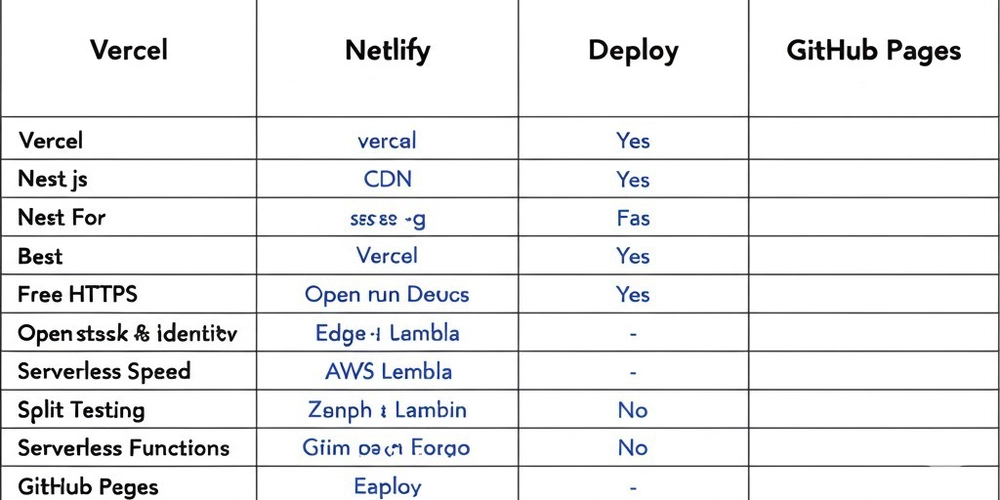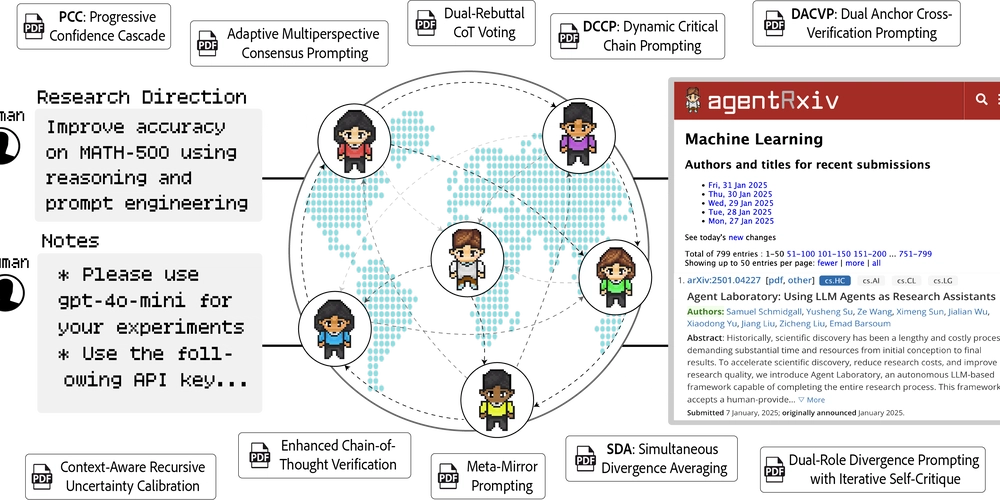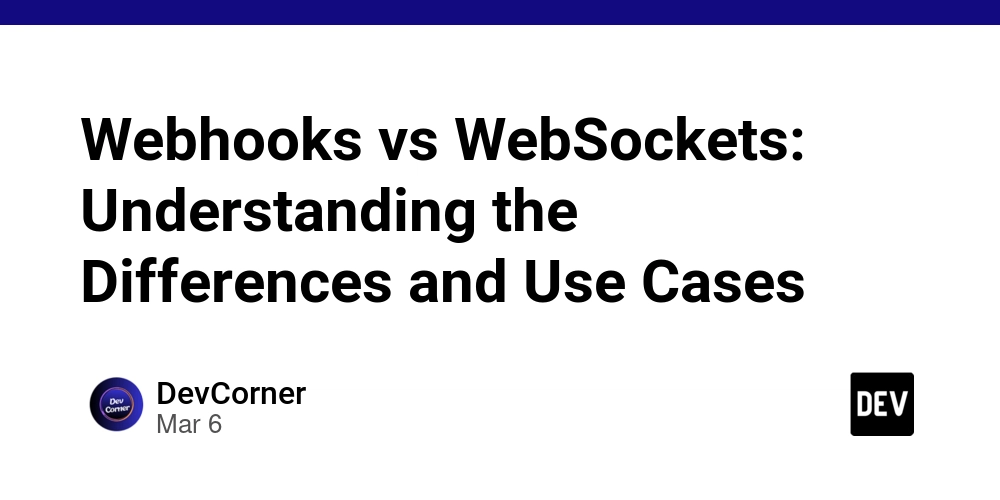How to Deploy React, Vue, and Angular Apps on Vercel, Netlify & GitHub Pages
Deploying modern JavaScript apps has never been easier thanks to static hosting platforms. Whether you're using React, Vue, or Angular, services like Vercel, Netlify, and GitHub Pages offer simple, fast, and free deployment options. This guide will walk you through deploying your frontend apps step-by-step. 1. Deploying to Vercel (Best for Next.js & React) Vercel specializes in frontend frameworks with zero-config deployment. Steps to Deploy Build Your App npm run build # Creates a `dist` or `out` folder Install Vercel CLI npm install -g vercel Deploy vercel Follow prompts to link your Git repo or drag-and-drop your build folder. Key Features ✅ Automatic HTTPS & CDN ✅ Preview URLs for Every Commit ✅ Serverless Functions Support Example: A Next.js app deploys instantly with optimized SSR/SSG. 2. Deploying to Netlify (Best for JAMstack) Netlify offers powerful CI/CD and plugin integrations. Steps to Deploy Connect Your Git Repo Sign in to Netlify → "New site from Git" → Choose GitHub/GitLab/Bitbucket. Configure Build Settings Build command: npm run build Publish directory: dist (or build for React) Deploy! Netlify automatically deploys on every git push. Key Features ✅ Free HTTPS & Custom Domains ✅ Forms, Identity (Auth), and Serverless Functions ✅ Split Testing & Rollbacks Example: A Vue.js app with Netlify CMS for content management. 3. Deploying to GitHub Pages (Free for Open Source) GitHub Pages is ideal for simple static sites and open-source projects. Steps to Deploy Set homepage in package.json "homepage": "https://username.github.io/repo-name" Install gh-pages npm install gh-pages --save-dev Add a Deploy Script "scripts": { "deploy": "gh-pages -d dist" } Run Deployment npm run deploy Key Features ✅ Free Hosting for Public Repos ✅ Integrated with GitHub Workflows ❌ No Serverless Functions Example: An Angular portfolio hosted at username.github.io/my-portfolio. Comparison: Vercel vs. Netlify vs. GitHub Pages Feature Vercel Netlify GitHub Pages Best For Next.js, React JAMstack, Vue Open-source, Docs Free Tier ✅ Yes ✅ Yes ✅ Yes (Public) Custom Domain ✅ Free SSL ✅ Free SSL ✅ Manual Setup Serverless ✅ Edge Functions ✅ AWS Lambda ❌ No Deploy Speed ⚡ Fastest ⚡ Fast Medium Which One Should You Choose? Vercel: If you use Next.js or need serverless APIs. Netlify: For JAMstack apps with plugins (CMS, Forms). GitHub Pages: For simple static sites (docs, portfolios). Troubleshooting Tips 404 Errors on Refresh (SPAs) Fix: Add a _redirects file (Netlify/Vercel): /* /index.html 200 Environment Variables Configure in Netlify/Vercel dashboard under "Environment Variables." CORS Issues Use Netlify/Vercel serverless proxies or configure API headers. Final Thoughts Deploying React, Vue, or Angular apps is effortless with these platforms. For full-stack apps: Vercel/Netlify + serverless functions. For simple sites: GitHub Pages. Start deploying today—your app is just a git push away!

Deploying modern JavaScript apps has never been easier thanks to static hosting platforms. Whether you're using React, Vue, or Angular, services like Vercel, Netlify, and GitHub Pages offer simple, fast, and free deployment options. This guide will walk you through deploying your frontend apps step-by-step.
1. Deploying to Vercel (Best for Next.js & React)
Vercel specializes in frontend frameworks with zero-config deployment.
Steps to Deploy
- Build Your App
npm run build # Creates a `dist` or `out` folder
- Install Vercel CLI
npm install -g vercel
- Deploy
vercel
- Follow prompts to link your Git repo or drag-and-drop your build folder.
Key Features
✅ Automatic HTTPS & CDN
✅ Preview URLs for Every Commit
✅ Serverless Functions Support
Example:
A Next.js app deploys instantly with optimized SSR/SSG.
2. Deploying to Netlify (Best for JAMstack)
Netlify offers powerful CI/CD and plugin integrations.
Steps to Deploy
-
Connect Your Git Repo
- Sign in to Netlify → "New site from Git" → Choose GitHub/GitLab/Bitbucket.
-
Configure Build Settings
-
Build command:
npm run build -
Publish directory:
dist(orbuildfor React)
-
Build command:
Deploy!
Netlify automatically deploys on everygit push.
Key Features
✅ Free HTTPS & Custom Domains
✅ Forms, Identity (Auth), and Serverless Functions
✅ Split Testing & Rollbacks
Example:
A Vue.js app with Netlify CMS for content management.
3. Deploying to GitHub Pages (Free for Open Source)
GitHub Pages is ideal for simple static sites and open-source projects.
Steps to Deploy
-
Set
homepageinpackage.json
"homepage": "https://username.github.io/repo-name"
-
Install
gh-pages
npm install gh-pages --save-dev
- Add a Deploy Script
"scripts": {
"deploy": "gh-pages -d dist"
}
- Run Deployment
npm run deploy
Key Features
✅ Free Hosting for Public Repos
✅ Integrated with GitHub Workflows
❌ No Serverless Functions
Example:
An Angular portfolio hosted at username.github.io/my-portfolio.
Comparison: Vercel vs. Netlify vs. GitHub Pages
| Feature | Vercel | Netlify | GitHub Pages |
|---|---|---|---|
| Best For | Next.js, React | JAMstack, Vue | Open-source, Docs |
| Free Tier | ✅ Yes | ✅ Yes | ✅ Yes (Public) |
| Custom Domain | ✅ Free SSL | ✅ Free SSL | ✅ Manual Setup |
| Serverless | ✅ Edge Functions | ✅ AWS Lambda | ❌ No |
| Deploy Speed | ⚡ Fastest | ⚡ Fast | Medium |
Which One Should You Choose?
- Vercel: If you use Next.js or need serverless APIs.
- Netlify: For JAMstack apps with plugins (CMS, Forms).
- GitHub Pages: For simple static sites (docs, portfolios).
Troubleshooting Tips
-
404 Errors on Refresh (SPAs)
-
Fix: Add a
_redirectsfile (Netlify/Vercel):
/* /index.html 200 -
Fix: Add a
-
Environment Variables
- Configure in Netlify/Vercel dashboard under "Environment Variables."
-
CORS Issues
- Use Netlify/Vercel serverless proxies or configure API headers.
Final Thoughts
Deploying React, Vue, or Angular apps is effortless with these platforms.
- For full-stack apps: Vercel/Netlify + serverless functions.
- For simple sites: GitHub Pages.
Start deploying today—your app is just a git push away!









































































































































































![[The AI Show Episode 144]: ChatGPT’s New Memory, Shopify CEO’s Leaked “AI First” Memo, Google Cloud Next Releases, o3 and o4-mini Coming Soon & Llama 4’s Rocky Launch](https://www.marketingaiinstitute.com/hubfs/ep%20144%20cover.png)




























































































































![[DEALS] The All-in-One Microsoft Office Pro 2019 for Windows: Lifetime License + Windows 11 Pro Bundle (89% off) & Other Deals Up To 98% Off](https://www.javacodegeeks.com/wp-content/uploads/2012/12/jcg-logo.jpg)



























![Is this too much for a modular monolith system? [closed]](https://i.sstatic.net/pYL1nsfg.png)






















































































































_Andreas_Prott_Alamy.jpg?width=1280&auto=webp&quality=80&disable=upscale#)
































































































![What features do you get with Gemini Advanced? [April 2025]](https://i0.wp.com/9to5google.com/wp-content/uploads/sites/4/2024/02/gemini-advanced-cover.jpg?resize=1200%2C628&quality=82&strip=all&ssl=1)













![Apple Shares Official Trailer for 'Long Way Home' Starring Ewan McGregor and Charley Boorman [Video]](https://www.iclarified.com/images/news/97069/97069/97069-640.jpg)
![Apple Watch Series 10 Back On Sale for $299! [Lowest Price Ever]](https://www.iclarified.com/images/news/96657/96657/96657-640.jpg)
![EU Postpones Apple App Store Fines Amid Tariff Negotiations [Report]](https://www.iclarified.com/images/news/97068/97068/97068-640.jpg)
![Apple Slips to Fifth in China's Smartphone Market with 9% Decline [Report]](https://www.iclarified.com/images/news/97065/97065/97065-640.jpg)




































































































































